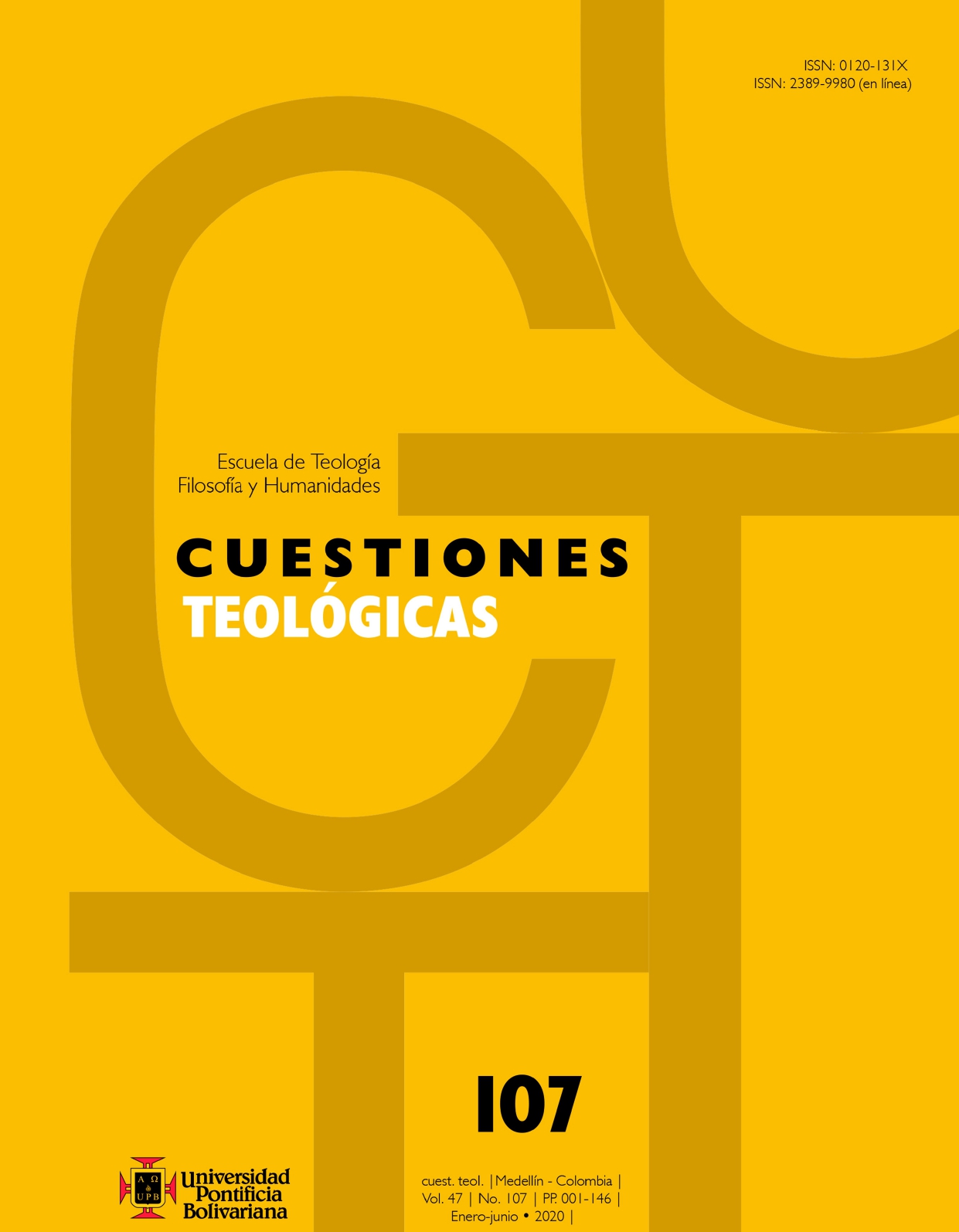Structure, Narratological and Contextual Analysis of Jn 7,53-8,11
Main Article Content
Abstract
Pope Francis insistently repeats that mercy is at the core of the teachings of the Gospel. Years ago, Cardinal Walter Kasper also stated that mercy had been forgotten within systematic theology. Additionally, there is a new sensitivity towards gender violence. Those ideas make Christians to reconsider our ways of feeling and acting. Bearing this in mind, the passage of the adulterous woman (Jn 7:53 – 8:11) is an example of the merciful actions of Jesus towards women and those who have no voice. It is a passage full of humanity in which two opposed attitudes towards sin are introduced: legalism and mercy. It also introduces the original and revolutionary way in which Jesus relates to women in a society that did not consider them. Thus, the article contributes to the study of the passage addressing it from the perspective of structural and narrative analysis. Scholars consider this passage as a Lucan one that is inserted into the fourth gospel due to the cut within the discourse of the Feast of Tabernacles (chapters 7 and 8) and because of its characteristic style and absence –or different position– in some manuscripts (specially, those previous to the third century). The current canonical location remains a mystery and, noteworthy, there are few researches that address such issue. In this article, the structural analysis suggests that the question framed by Jesus regarding personal sin is the key aspect of his conflict with scribes and pharisees. The use of narrative analysis makes clear some features and details of the passage that could be overlooked with other methods and approaches. Finally, the contextual analysis of the passage provides a possible answer to the issue of its current location, but just as a first approach.
References
Brown, R. (1999). El Evangelio según Juan. I-XII. Introducción, traducción y notas. Madrid: Ediciones Cristiandad.
Carrillo Alday, S- (2010). El Evangelio según San Juan. El Evangelio del Camino, de la Verdad y de la Vida. Estella: Verbo Divino.
Castro Sánchez, S. (2001). Evangelio de Juan. Comprensión exegético-existencial, Sevilla: Desclée De Brouwer.
Conti, C. (2002). “El misterio del texto elusivo: Juan 7,53-8,11. Revista de interpretación bíblica latinoamericana 41 (1) 93-106.
Günther, W. (1993) “ἀναμάρτητος”. En L. Coenen, E. Beyreuther & H. Bietenhard, Diccionario teológico del Nuevo Testamento. (Vol. III, 319). Salamanca: Sígueme.
Kasper, W. (2014). La misericordia. Clave del evangelio y de la vida cristiana. Santander: Sal Terrae.
Krüger, R., Croatto, S. & Míguez, N. (1996). Métodos exegéticos. Buenos Aires: Publicaciones Educab.
León-Dufour, X. (1990). Vocabulario de teología bíblica. Barcelona: Herder.
León-Dufour, X. (1992). Lectura del Evangelio de Juan. Jn 5-12. (Vol. II). Salamanca: Sígueme.
Marguerat, D. & Bourquin, Y. (2000). Cómo leer los relatos bíblicos. Iniciación al análisis narrativo. Santander: Sal Terrae.
O’Sullivan, M. (2015). “Reading John 7:53–8:11 as a narrative against male violence against women”. HTS Teologiese Studies 71 (1) 1-8. Recuperado de http://dx.doi.org/10.4102/hts.v71i1.2939.
Pabón, J. M. (2014). Diccionario manual griego-español, Barcelona: Larousse.
Perkins, P. (2004). “Evangelio de Juan”. En R. Brown; J. Fitzmeyer & R. Murphy (Eds.), Nuevo comentario bíblico San Jerónimo. Nuevo Testamento y artículos temáticos (524-589). Estella: Verbo Divino.
Rivas, L. H. (2013). El Evangelio de Juan. Introducción. Teología. Comentario. Buenos Aires: San Benito.
Sánchez Castelblanco, W. G. (2010). “Jesús y la mujer adúltera. Análisis exegético-teológico de Jn 7,53-8,11”. Franciscanum, LII (154), 17-52.
Sand, A. “ἂνθρωπος” (2005). En H. Blaz & G. Schneider. Diccionario exegético del Nuevo Testamento (298-310). Salamanca: Sígueme.
Schnackenburg, R (1980). El Evangelio según San Juan. Versión y comentarios. (Vol. II). Barcelona: Herder.
Simeons, Y. (1997). Secondo Giovanni. Una traduzione e un’interpretazione. Bologna; Edizioni Dehoniane.
Tunc, S. (1999). También las mujeres seguían a Jesús. Santander: Sal Terrae.
Vawter, B. (1972). “Evangelio según San Juan”. En R. Brown; J. Fitzmeyer & R. Murphy (Eds.), comentario bíblico San Jerónimo (399-529). Madrid: Ediciones Cristiandad.
Witherington, B. (1984). Women in the ministry of Jesus: a study of Jesus' attitudes to women and their roles as reflected in His earthly life. Cambridge, New York, Melbourne: Cambridge University Press.






